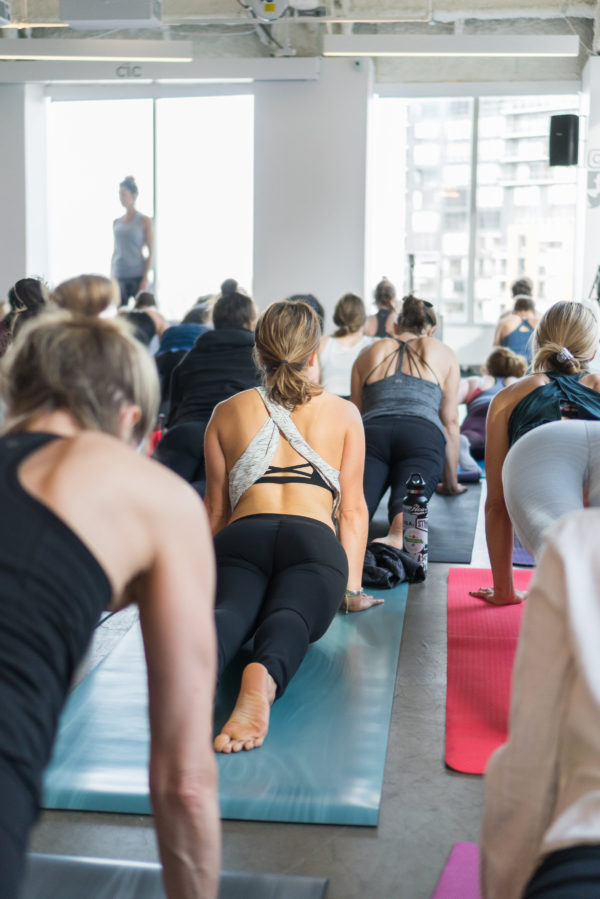
When you’re teaching, do you use positive language? Sure, you’d never intentionally say something negative, but are there more positive ways to say something so your students feel empowered? Please know; I’m not advocating for a bunch of platitudes to be tossed out every few minutes. Even a new student after a while will wonder if they mean anything! Constantly (and without much feeling) saying, “Great job!” after a while just rings hollow.
Let me give you an example. I focus my classes on anatomy. As a result, I give a lot of anatomy based, detailed cues. In most instances, there’s something specific I’d like to communicate and there are definitely things I’d like you to avoid. So, I can either say:
“Don’t keep your knee super straight as you come into your Triangle Pose, as that might lead to a sense of the joint supporting you, not the muscle.”
So, here I’m trying to get the students to feel the difference between hyperextending their straight leg or being more in the muscles of the leg, both the quads and the hamstrings. But I use the word “Don’t” and it can come off as negative or almost like I’m telling them, “There’s only one right way to do this.”
Instead, I could say:Â
“As you come into Triangle, keep a slight bend in your front leg and see if you can notice the contraction of the hamstrings behind the thigh. Keep that to some degree while you straighten your leg.”
See? In this instance, I never say “Don’t” and I instead teach them the factors of anatomy I want to communicate and still leave room for them to find their own way.
Here’s another one:
“Now as you come into Boat, I don’t want you to ROUND your back, but instead, lift up and out of your pelvis to prevent all that sagging into the lower back we do all day when we sit.”
Now this may all be true, but how about instead:Â
“As you come into Boat Pose, think about both the front and back side of the middle of the body supporting you in the posture. As you lift up, engage your rectus abdominus, up the mid-line of your body and press down through your sitting bones while lifting up through the crown of your head to engage the erectors. These two actions together can help you feel more supported in this pose.”
I realize both of these examples center around the use of the word “Don’t” and the idea of teaching what you don’t want people to do versus what you want them to do. This is a pretty common trap and as teachers, we can fall into it and because we know our heart’s in the right place, miss hearing how these cues come across.
There are other ways our language can come across as less than positive and these are, thankfully, not very common. They revolve around cues and comments that have to do with body image, things like “Let’s do some abs so we’re ready for bathing suit season!” Again, whenever I hear a cue like this, I get the impression the teacher is just nervous and looking for something to say to fill up the space with a voice and a personality rather than just giving cues. Now, in some contexts and in other kinds of fitness based classes, maybe that works. I just find in a yoga class our language should be positive and welcoming to all kinds of students.
Let me close by saying that no one expects you to be a perfect example of perfect cues all the time! We’re human. We get nervous. We have thoughts about our OWN body and ourselves that sometimes get communicated in ways when we teach. In fact, my next podcast is going to be related to this idea of self-limiting thoughts, not as they relate to cues you provide when teaching, but self-limiting thoughts that may be blocking you from being a powerful teacher.
That podcast episode goes live this week. For now, if you missed the FIRST episode of my podcast, “The Bare Bones Yoga Podcast: Conversations for Yoga Teachers” you can catch it here.Â
Part of providing good, clear, well thought out cues on anatomy starts with understanding anatomy. I invite you to take my Learn Anatomy Challenge, which is underway now. It’s a free training on You Tube that walks you through key aspects of anatomy in a series of videos. You can download the guide here.Â
Thanks for reading and comment below!
